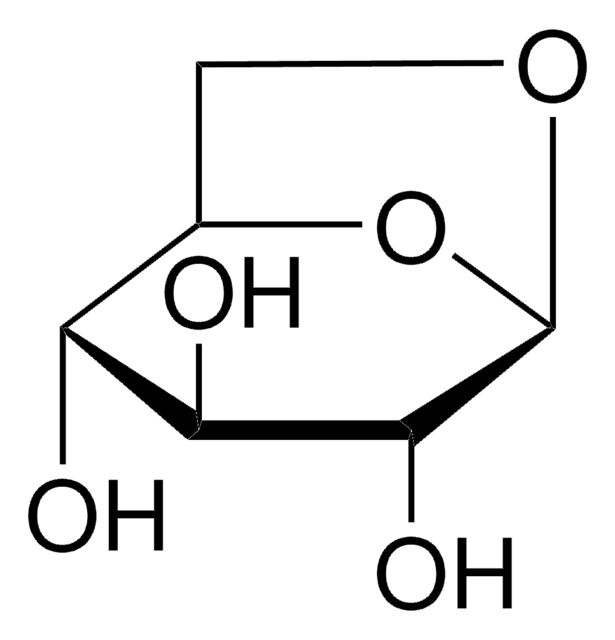所有图片(1)
About This Item
经验公式(希尔记法):
C12H17N5O4
CAS号:
分子量:
295.29
MDL號碼:
分類程式碼代碼:
12352200
PubChem物質ID:
NACRES:
NA.77
推荐产品
化驗
≥98% (HPLC)
形狀
solid
顏色
white to off-white
溶解度
H2O: >5 mg/mL
儲存溫度
2-8°C
SMILES 字串
CCNC1=Nc2c(ncn2[C@H]3C[C@H](O)[C@@H](CO)O3)C(=O)N1
InChI
1S/C12H17N5O4/c1-2-13-12-15-10-9(11(20)16-12)14-5-17(10)8-3-6(19)7(4-18)21-8/h5-8,18-19H,2-4H2,1H3,(H2,13,15,16,20)/t6-,7+,8+/m0/s1
InChI 密鑰
VOKQFDULHQUWAV-XLPZGREQSA-N
一般說明
N2-Et-dG, an adduct between DNA and the first metabolite of ethanol (acetaldehyde), strongly blocks transcription by RNA polymerases (RNAPs), including mammalian RNAPII and yeast RNAPII, E. coli RNAP, as well as T7 RNAP. All three of the multisubunit RNAPs incorporate a single rNTP residue opposite the N2-Et-dG lesion. The mammalian RNAPII exclusively incorporates cytidine monophosphate (CMP) opposite the N2-Et-dG lesion. The accessory transcription factor TFIIS does not usually act as a lesion bypass factor; instead, it stimulates the polymerase to remove the CMP incorporated opposite the lesion by mammalian RNAPII. N2-Et-dG reduces CTP incorporation by ~1500 fold.
訊號詞
Danger
危險分類
Acute Tox. 2 Dermal - Acute Tox. 2 Inhalation - Acute Tox. 2 Oral - Carc. 2 - STOT RE 2
儲存類別代碼
6.1A - Combustible acute toxic Cat. 1 and 2 / very toxic hazardous materials
水污染物質分類(WGK)
WGK 3
閃點(°F)
Not applicable
閃點(°C)
Not applicable
個人防護裝備
Eyeshields, Faceshields, Gloves, type P2 (EN 143) respirator cartridges
Yuan-Jhe Chang et al.
Archives of toxicology, 92(8), 2665-2680 (2018-06-27)
Adductomics is expected to be useful in the characterization of the exposome, which is a new paradigm for studying the sum of environmental causes of diseases. DNA adductomics is emerging as a powerful method for detecting DNA adducts, but reliable
我们的科学家团队拥有各种研究领域经验,包括生命科学、材料科学、化学合成、色谱、分析及许多其他领域.
联系技术服务部门








